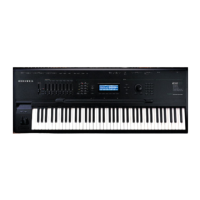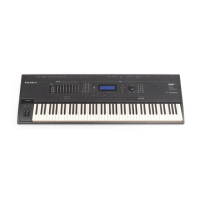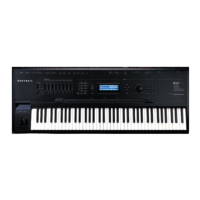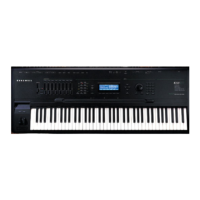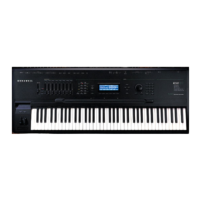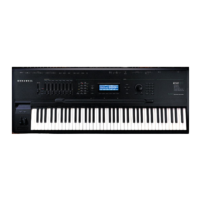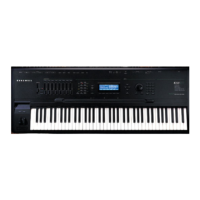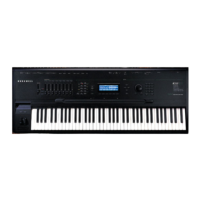Program Mode and the Program Editor
Program Editor—OUTPUT Page
6-21
Program Editor—OUTPUT Page
This page is reached by pressing the OUTPUT soft button. This is where you route the signal to
the eight separate outs, and to the MIX outputs, with or without passing through the effects
processor on the way. If you’re using the MIX outputs, select Output Group A if you want the
layer to appear at the MIX outputs with effects, or Output Group B, C, or D if you want the
layer to appear dry at the MIX outputs.
Before we look at the OUTPUT page, we’ll take a quick look at the K2500’s audio outs. You will
see there are ten, configured as pairs labeled Mix, A, B, C, & D. It is important to understand
that even though there are ten jacks, there are only 8 routable outs. Here is the way it works:
When you route a signal, you choose the A, B, C, or D pairs and the appropriate panning
position. But all audio signals come out of the Mix pair, until you physically plug a cable into a
separate out. At that point, any signal routed to that out is removed from the Mix and comes
out of that particular out. So if you plug cables into all of the separate outs, there will be no
signal coming from the Mix outs.
To route something through the standard effects processor in your 2500, you need to set the
output to A. But the effects actually only come out of the MIX outs. So if you plug cables into
the A outs then, you will not be able to use the effects. For this reason, a typical way users will
wire their units is to plug into the MIX, B, C, and D pairs.
The OUTPUT page gives you broad control over the audio signal. You can adjust the output
routings of every layer in every program, enabling you to take maximum advantage of the
K2500’s flexible audio output capabilities.
There are actually four different configurations of the OUTPUT page. The one you see depends
on whether the current layer uses a stereo keymap, and whether it uses a double-output
algorithm. A double-output algorithm is one whose signal path is split into two parts before
final amplification.
Regardless of the page’s configuration, there are parameters for adjusting the Output Group,
the Pan position, the Output Mode, the Gain, the Crossfade control, and the Crossfade sense.
Layers that use stereo keymaps, or that use double-output algorithms, have additional sets of
Output Group and Pan parameters on their OUTPUT pages.
The following page is for a layer with one keymap and a single-path algorithm.
EditProg:OUTPUT||||||||||||<>Layer:1/1||
||||||||||||||||||||||||||||||||||||||||
Pair:A(FX)||||||||||||||||||||||||||||||
Pan|:L|||||||*|||||||R||||||||||||||||||
Mode:+MIDI||||||||||||||||||||||||||||||
Gain:6dB||||||||||||||||||||||||||||||||
CrossFade|:OFF||||||XFadeSense:Norm|||||
<more||OUTPUT|EFFECT|COMMON|SetRng|more>
PARAMETER RANGE OF VALUES DEFAULT
PAIR A(FX), B(DRY), C(DRY), D(DRY) A(FX)
PAN Left to Right (15 positions) Center
MODE Fixed, +MIDI, Auto, Reverse +MIDI
GAIN –12 to 30 dB (6 dB increments) 6 dB
CROSSFADE CONTROL Control Source list OFF
CROSSFADE SENSE Normal, Reversed Normal
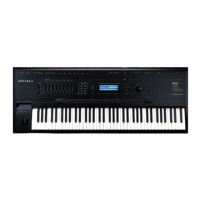
